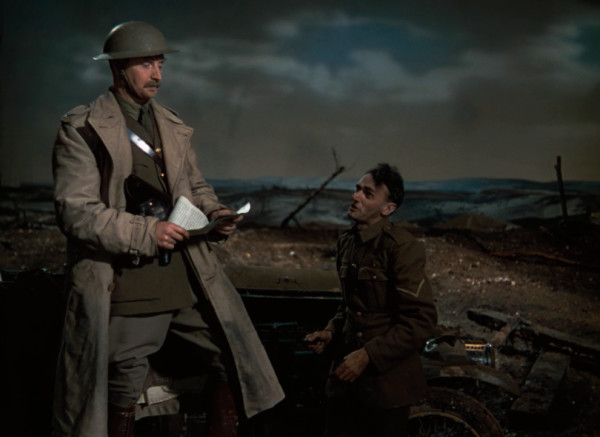Have you ever seen a movie that stuck in your head for reasons you couldn’t fully explain? A film that you eventually realized had a much bigger impact on you than it seemed to when you were sitting in the theater? That was my experience of 1943’s The Life and Death of Colonel Blimp.
Made during the war by the legendary team of Michael Powell and Emeric Pressburger (aka “The Archers”), the film tells the eventful life story of Clive Candy (Roger Livesey) over a more than 4-decade span. The borderline-bizarre opening sequence, which might just as easily have presaged a big-budget MGM musical, introduces us to Candy in the winter of his life, where he has taken on the unappealing characteristics of the self-satisfied, out of touch cartoon character known as Colonel Blimp. But with a nice bit of camera trickery, Candy recalls the memory of his salad days, and is transformed into the markedly different young man that he was: Handsome, kind, brave, and in some ways boyishly innocent. The film then portrays his adventures through heroic moments, comic situations, romance and friendship, with two other other figures serving as foils. One is a noble German officer whom he meets in World War I (Anton Walbrook) and the other is the eternal feminine: Three different characters all played by Deborah Kerr who stay the same age as Candy ages through life.
There is much to love about this long, multi-layered and richly rewarding film. The craft and humanity of the producer-director-screenwriting team is on full display, making it surprising that this movie is not remembered as often as their other triumphs such as The Red Shoes and Black Narcissus. Powell and Pressburger’s characters are unusually well rounded and evolve over time, which was rare for movies of this period. Indeed, Winston Churchill allegedly opposed the release of The Life and Death of Colonel Blimp because it portrayed a German soldier so movingly that the British public might sympathize with their current enemy (once you have seen the movie, you will realize how ludicrous this fear was).

The thematic latticework of the film is truly compelling. On the surface, the movie can be enjoyed as an exciting life story full of moments of humor and action. But at a deeper level, the film explores how old-fashioned values were unable to meet the demands of the mid 20th-century, how the young can grow up to be very different older people than ever they planned, how loving one’s country has rewards and limits, how men may think they are smarter than women but are almost always wrong, and how we don’t always understand what we long for until it is gone. Wonderfully, the film never preaches a particular simple message about any of these themes. Rather, it gives each character and viewpoint its due, sympathetically and sometimes sadly, without ever taking sides.
Visually, this brilliantly restored film is Technicolor at its best, with Georges Périnal painting the screen with one stunning shot after the other. The anchoring performances by Livesey, Walbrook and Kerr are also magnificent, not just individually but in the way they play off each other. Indeed, the performances (and the well-scripted characters) make the film even better than a similar epic movie made in the same era: Cavalcade. That fine movie at times kept the viewer at some emotional distance because its toffy characters were a bit inaccessible; here one can’t help but be drawn into the emotional lives of the people on screen.
There could be no better closing to this review that Martin Scorsese’s description of how this landmark movie inspired him. Scorsese is not just a brilliant filmmaker in his own right; he is also a lifelong student of cinema and a champion of preserving its past. He first saw The Life and Death of Colonel Blimp as a child. Even though it was a mutilated version with over 40 minutes cut out and the rest of the scenes re-arranged, and even though he watched it on a small black and white television, he could still perceive Powell and Pressburger’s genius.
p.s. For another perspective on this classic movie, let me recommend my friend Hans Kundnani’s analysis of what the film has to say about Englishness and the relationship between Powell and Pressburger.

